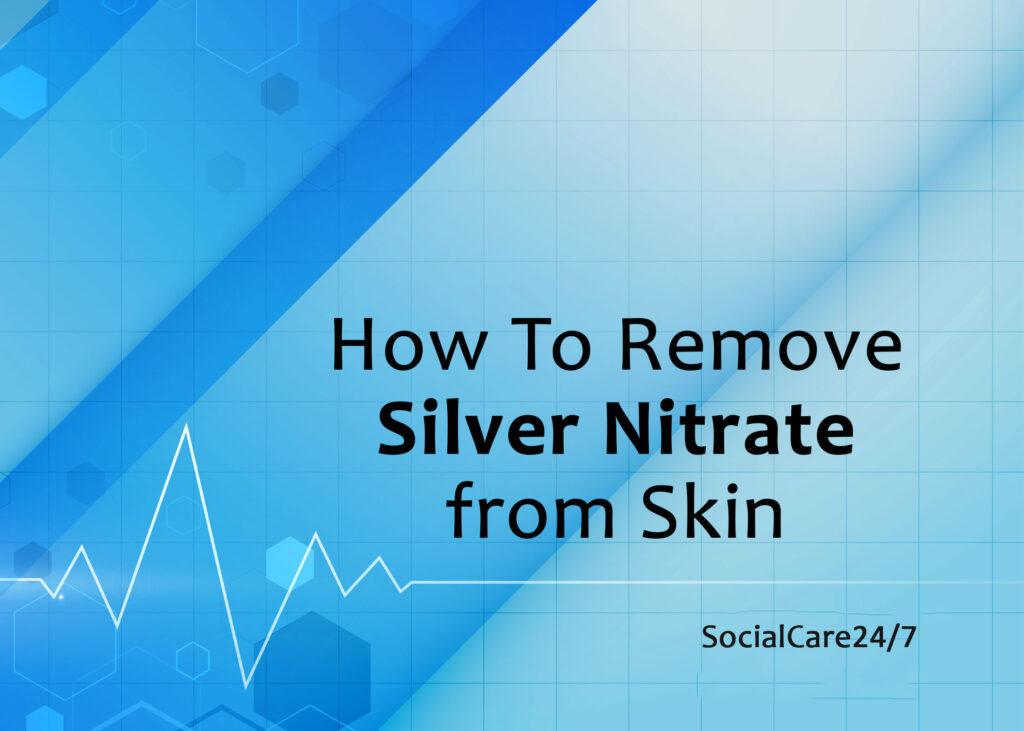Medicinal uses for silver nitrate date back centuries. This chemical is antiseptic. Many wound care professionals use silver nitrate to heal and prevent infections. It comes in powder and sticks. Each has advantages and uses.
Healthcare professionals and patients must know about silver nitrate in wound care. Knowing when and how to use silver nitrate powder or sticks can streamline treatment and recovery. Knowing how to use something correctly can prevent issues and improve wound patient outcomes.
What is the Meaning of Silver Nitrate?
AgNO3 is silver nitrate, which contains N2O, silver, and oxygen. The white crystal-like solid dissolves easily in water. Silver nitrate’s antimicrobial properties prevent and treat wound infections.
Most Common Silver Nitrate Uses
Wound Treatment
The use of silver nitrate to prevent infection and speed wound healing is common. You can treat wounds with powder or solution.
Providing reasons
Silver nitrate sticks, also called applicators, close small cuts and scrapes and remove warts and granulation tissue.
Peels made of chemicals
Dermatology uses silver nitrate in chemical peels and other procedures to remove dead skin and grow new skin.
Safety Tips and Warnings
Skin staining
Silver nitrate can temporarily stain skin dark brown or black when exposed to sunlight. Physicians should warn patients of this side effect.
Safety Glasses
To avoid irritation or injury, you must be careful when using silver nitrate sticks or solutions near the eyes.
The toxicity
In moderation, silver nitrate on the skin is safe. If eaten in excess, it can cause nausea, vomiting, and stomach pain. Never touch or eat mucous membranes.
Can I Apply Silver Nitrate?
Applying Silver Nitrate to Wounds
Silver nitrate can heal open wounds. Most people use powder or silver nitrate sticks (applicators).
Type: Powder
Apply silver nitrate powder to the wound bed or dressing. Larger wounds that need precise application or are hard to reach are often treated with it.
Silver nitrate sticks
Small, cylindrical silver nitrate-coated wood or plastic sticks. Their design makes direct wound application easy and controlled.
Helps wounds heal
Silver nitrate’s antimicrobial properties can prevent infectious wounds and clean them. Silver ions poison bacteria and other microorganisms. This reduces infection and speeds up wound healing.
Potential Side Effects and Risks
Silver nitrate can heal wounds, but doctors must supervise its use. Silver nitrate used on open wounds may cause these risks and side effects:
Skin staining
Silver nitrate can temporarily stain skin dark brown or black when exposed to sunlight. This stain is harmless and usually fades.
Tissue Damage
Too much or too long exposure to silver nitrate can cause chemical burns or tissue irritation. Use it only on the wound bed and avoid healthy skin.
Allergic reaction
Skin irritation, itching, and rashes can result from silver nitrate allergies. Before widespread use, sensitive people must be patch-tested.
How Long Does Silver Nitrate Rehabilitation Take?
Body Heals After Silver Nitrate Treatment
The wound type, severity, health, and aftercare instructions determine how quickly someone heals after silver nitrate treatment. Silver nitrate speeds healing by reducing infection and inflammation.
Initial stage
After applying silver nitrate, the wound may swell or itch. This is normal healing. Silver nitrate suppresses wound bacteria and promotes tissue growth.
Reduce infection risk
Antimicrobial silver nitrate reduces infection risk and prevents bacteria from colonizing the wound for days to weeks. This allows the body’s healing systems to repair damaged tissue.
Got new tissue
As the infection and swelling subside, the wound heals internally. New tissue covers the wound, and the edges may close as it heals.
Things Affect Healing Time
Several factors affect silver nitrate wound healing time:
Wound depth and size
Deeper wounds may heal slower than superficial ones.
Problematic health conditions
People with diabetes, vascular disease, or a weak immune system may heal wounds more slowly.
Wound location
Wound location affects healing time. Reduced blood flow and movement slow wound healing.
Following care instructions
After-treatment care instructions like keeping the wound clean and dry, changing dressings regularly, and avoiding slow healing activities can affect healing time.
Why Does Your Skin Feel Different?
Effects of Silver Nitrate on Skin
Skin specialists use silver nitrate for its antiseptic and cauterizing properties. Silver nitrate applied to the skin reacts with tissue proteins and chemicals, causing several effects:
Silver nitrate kills germs, viruses, and fungi. Destroying cellular processes and denaturing proteins kill microorganisms, preventing growth.
Acidic silver nitrate can cause tissue eschars. Clotting blood vessels and sealing the wound during cauterization reduces bleeding and infection.
Silver Nitrate Helps Common Skin Issues
Silver nitrate treats many skin issues, including:
- It prevents infection and speeds up wound, ulcer, and burn healing. Silver nitrate sticks or solutions can clean and debride the wound bed.
- Silver nitrate kills wart-supporting tissue, helping them fall off. Silver nitrate is caustic and breaks down wart tissue to remove it.
- Silver nitrate can reduce hypergranulation in wounds. Silver nitrate improves wound healing by burning excess tissue.
Follow your doctor’s instructions and seek medical help if side effects occur when using silver nitrate to treat skin issues. Safety measures can prevent silver nitrate exposure and abuse.
Conclusion
Patients and doctors must understand how silver nitrate powder or stick works on wounds. Silver nitrate can heal wounds, relieve pain, and prevent infections, but side effects and pain management are important. Post-treatment pain and stinging may occur, but painkillers and gentle wound care can help.
Patients can feel confident in their recovery with lots of information and support from healthcare professionals. It will improve wound healing and patient satisfaction.


